Japan's Official Development Assistance White Paper 2007
Box 7. Cultural Grant
In developing countries, more people are now interested in promoting their unique culture, and many efforts have been made on nation building that encompasses cultural aspects as well. However, few developing nations have sufficient budgets for cultural policies, including the preservation and repair of heritage.
Cultural Grant was established as a set of grant aid instruments for the purpose of deepening understanding between Japan and developing countries through cultural assistance, as well as promoting their cultural assets and higher education institutions. Cultural Grants are administered through two schemes: Cultural Grant Aid and Grant Aid for Cultural Grassroots Projects. In FY2006, Japan disbursed ¥1,736 million to 21 projects as Cultural Grant Aid and about ¥303 million to 47 projects as Grant Aid for Cultural Grassroots Projects.*1 Japan has so far provided a total of ¥58.2 billion in Cultural Grant for 1,520 projects in 130 countries and regions.*2 The schemes have been highly esteemed around the world as one of Japan's unique initiatives focused on culture.
Specific measures include financial assistance for universities that have Japanese curricula and for organizations that promote martial arts like karate and judo. Also, Japan finances activities aimed at preserving cultural heritage in developing countries.
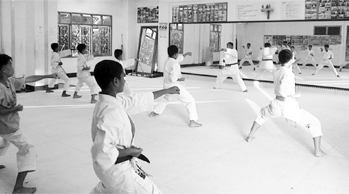
Children practicing karate on the karate mat provided by Grant Aid for Cultural Grassroots Projects in FY2002 (Laos). In August 2007, the plan of building a Japan-Laos gymnasium for martial arts was concluded on E/N basis.
Assistance for Rehabilitation of the Prambanan World Heritage Site (Indonesia)
In the wake of the May 27, 2006 earthquake in central Java, in Indonesia, approximately 6,000 people died, a total that is roughly equivalent to the number of victims of the Great Hanshin-Awaji Earthquake in Japan. The earthquake also damaged the Prambanan Temple Compounds, a UNESCO World Heritage Site. The Garuda Temple at the site was about to collapse, which indicated the magnitude of the shock.
About two months after the earthquake, Japan responded to the request of the Indonesian Government and sent a mission to survey the damage of the site. Japan being an earthquake-prone country, it possesses a range of know-how on rehabilitating structures damaged by earthquakes. Utilizing this knowledge, Japanese experts on architecture and earthquake resistance examined the damage using the latest technologies, all the while working under the blazing sun. The Indonesian side cooperated by providing the mission with documents recording the previous repair works done to the site, and engaged in technical discussions on the structure of the temples and other issues. Japan again sent the experts as a second mission in February 2007, and as such has been making a significant contribution to addressing the damage wrought by the earthquake, leading other countries by example.
In March 2007, Japan disbursed approximately ¥10 million as Grant Aid for Cultural Grassroots Projects to assist the Archaeological Heritage Preservation Office of Yogyakarta, an institution specializing in rehabilitating the Prambanan Site, in the purchase of equipment for working on the cultural assets. Japan's active contribution to restoring world heritage that is a source of pride for the Indonesian people is highly esteemed not only by archeological experts but across Indonesia.
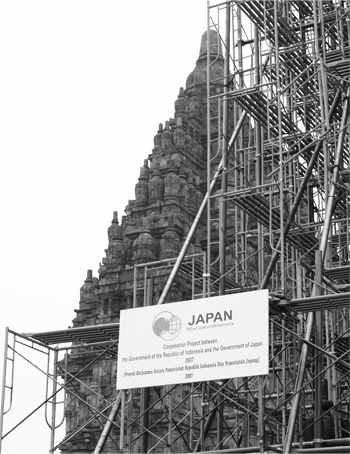
Prambanan Temple Compounds being rehabilitated using special equipment provided by Japan
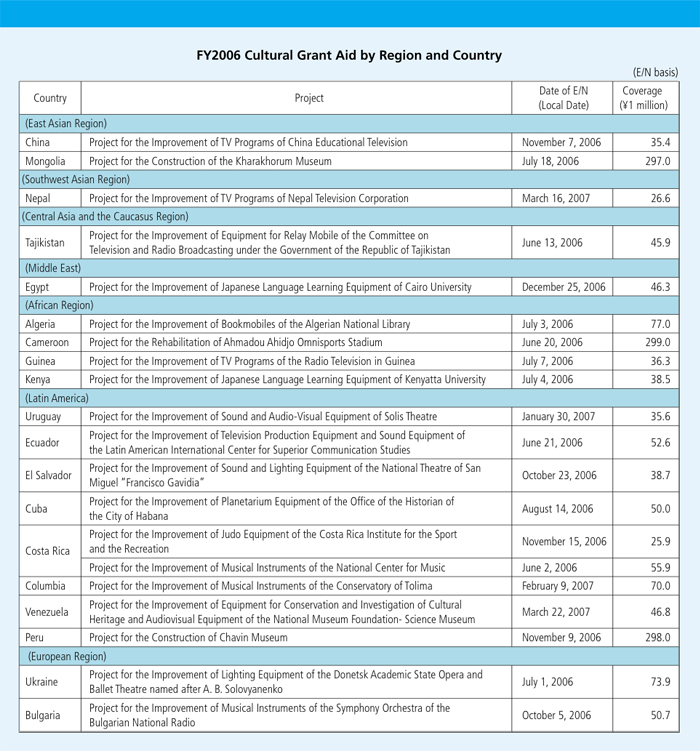
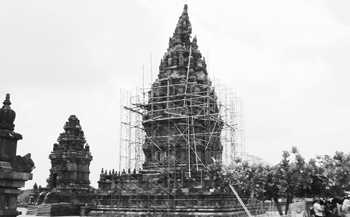
View of the Prambanan Temple Site
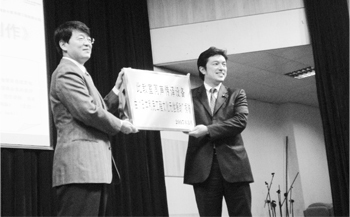
Vice Minister for Foreign Affairs Yasuhide Nakayama (right) attending a ceremony to mark the presentation of Japanese-language learning equipment provided by the FY2006 Grant Aid for Cultural Grassroots Projects (Nanjing University, China)

